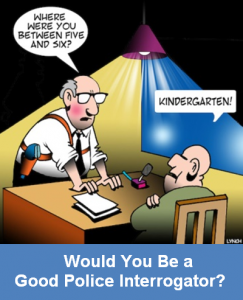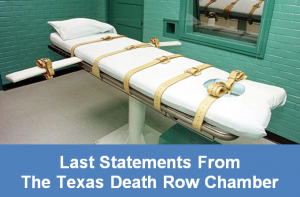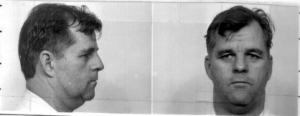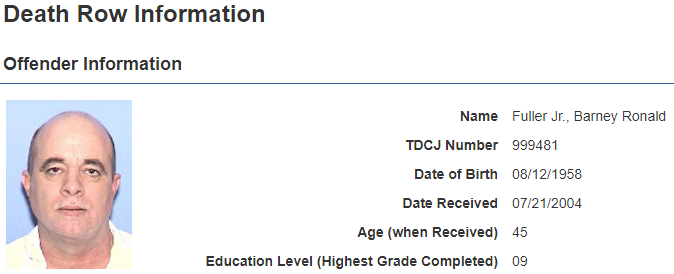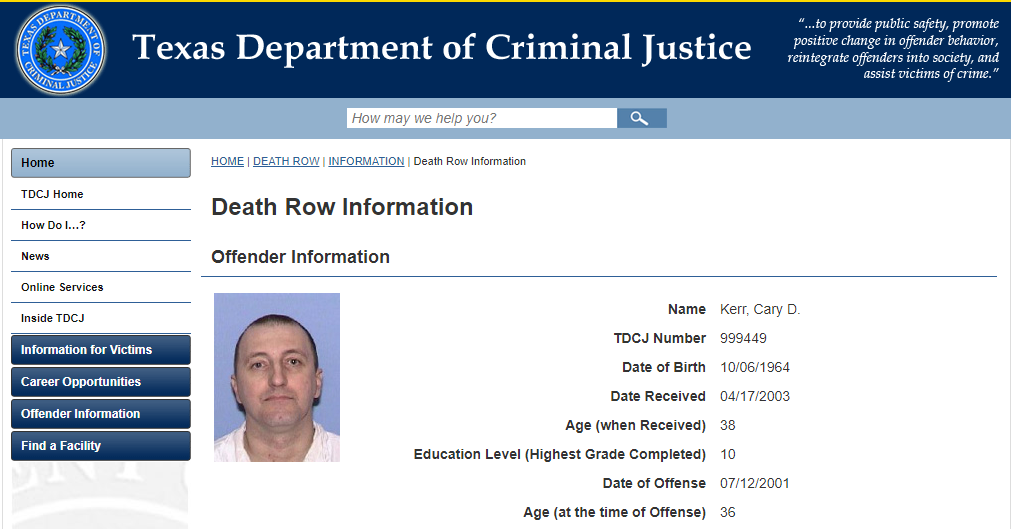 Every once in a while, two crime writers click. That’s what happened four or five years ago when I met Sue Coletta online. Since then, we’ve been the best of buddies even though Sue lives with her husband in New Hampshire and I live with my wife in British Columbia. Before you get any funny ideas there’s hanky-panky going on through the internet, be aware that our spouses fully endorse our partnership and they share our off-colored jokes. Bob and Rita also approve of the criminal deviancy we write about on a daily basis.
Every once in a while, two crime writers click. That’s what happened four or five years ago when I met Sue Coletta online. Since then, we’ve been the best of buddies even though Sue lives with her husband in New Hampshire and I live with my wife in British Columbia. Before you get any funny ideas there’s hanky-panky going on through the internet, be aware that our spouses fully endorse our partnership and they share our off-colored jokes. Bob and Rita also approve of the criminal deviancy we write about on a daily basis.
No. Hang on a sec… they approve of our writing, not the deviant criminals.
I say partnership because Sue and I constantly help each other out. We’ve collaborated on writing guides, we’ve co-helped others with their work, we’ve cross-blogged many times, and Sue was instrumental in getting me onboard the Kill Zone team as a regular contributor. We also encourage each other in new ventures, and I’m so happy to say that Sue was recently approached by a major U.S. publisher to research and write a true crime book about historic female serial killers in New England.
Sue’s new release is about to come out. Globe Pequot, a division of publishing giant Rowman & Littlefield, is putting Pretty Evil New England on the shelves real soon. I’ll let Sue tell you about it and, if you stick through to the end of this post and leave a comment, you’re automatically entered into a Globe Pequot contest to win a print version of Pretty Evil.
Here’s a conversation that only gets worse…
Hey, Sue. Welcome back to the DyingWords shack. You’re a sucker for punishment. Mind if I prod you with a few questions?
Haha. Guess I am! Hey, would you mind dimming that bright light a bit? I’m sweating like a horse in last place. While we’re on the subject, are the restraints necessary? I know you’re passionate about DyingWords, but the rope’s starting to dig into my wrists.
Restraint is an old tradition around DyingWords. Sort of a right-of-passage for guests. Tells us… What’ve you been up to with your new book baby, Pretty Evil New England: True Stories of Violent Vixens and Murderous Matriarchs?
 Pretty Evil New England tells the stories of five female serial killers who used New England as their hunting ground. For those who aren’t familiar with the area, New England encompasses the states of Connecticut, Massachusetts, Rhode Island, New Hampshire, Maine, and Vermont. The reason I chose these specific female serial killers was because, during their reign of terror, they murdered at least one victim in all six states. Not separately but combined. Also, these “ladies” murdered a total of 100 victims, and that’s only the ones we know about.
Pretty Evil New England tells the stories of five female serial killers who used New England as their hunting ground. For those who aren’t familiar with the area, New England encompasses the states of Connecticut, Massachusetts, Rhode Island, New Hampshire, Maine, and Vermont. The reason I chose these specific female serial killers was because, during their reign of terror, they murdered at least one victim in all six states. Not separately but combined. Also, these “ladies” murdered a total of 100 victims, and that’s only the ones we know about.
Perhaps I should share the description to give your readers a feel for the book.
For four centuries, New England has been a cradle of crime and murder—from the Salem witch trials to the modern-day mafia. Nineteenth century New England was the hunting ground of five female serial killers: Jane Toppan, Lydia Sherman, Nellie Webb, Harriet E. Nason, and Sara Jane Robinson.
Female killers are often portrayed as caricatures: Black Widows, Angels of Death, or Femme Fatales. But the real stories of these women are much more complex.
In Pretty Evil New England, true crime author Sue Coletta tells the story of these five women, from broken childhoods to first brushes with the death, and she examines the overwhelming urges that propelled these women to take the lives of a combined total of more than one-hundred innocent victims.
The murders, investigations, trials, and ultimate verdicts will stun and surprise readers as they live vicariously through the killers and the would-be victims that lived to tell their stories.
Fascinating! I think this is your first toe in the true crime water. How’d this come about?
I’ve written plenty of true crime stories on my blog, but not an entire book. This project challenged my storytelling skills to not only portray accurate points in history but to show readers how and why these women stole the lives of so many innocent victims. I accomplished my goal by slipping into the killers’ skin and showing the world through their eyes, as well as other key figures in the cases, including the dogged investigators who caught them.
How’d this project come about? I got lucky. *kidding* But seriously, things like this don’t happen every day. Here’s the scoop…
The stars aligned, angels sang, and the gates of heaven opened wide. That’s how it felt, anyway. In May of 2019, a woman on Twitter asked if I could follow her back so she could message me in private, but I didn’t respond right away. After a flood of recruiting cam girls all vying for me to join them, I’d become overly suspicious of strangers who asked to PM me. But once I read her bio — specifically the words “acquisitions editor” — my interest piqued. When I followed her back, I apologized for the delay in responding. In my defense, I was also working on final edits for RACKED, Grafton County Series, Book 4, at the time. Within minutes, she asked if she could email me instead.
After sending my email address, I still didn’t give the quick exchange much thought. But then my curiosity got the better of me and I engaged in a little online stalking research and discovered she worked at Globe Pequot, a publisher in Connecticut.
Still, I couldn’t quiet the voices in my head. What could this offer be about? Why me? Is this for real?
Due to past experiences it’s fair to say I was more leery than excited at that point. When the email dropped into my inbox moments later, I read it about a dozen times to search for clues of how the offer might be a cruel prank or something even more nefarious, like some hacker’s idea of a good time, a hacker who went through the motions of creating a fake Twitter profile for the sole purpose of tricking some poor schmuck like me.
If you’re thinking, wow, Sue’s skeptical and suspicious, you’re not wrong. Writers are the targets of numerous scams. If we don’t protect ourselves, who will?
 Anyway… The signature line read “Rowman & Littlefield Publishing Group, Inc.,” and the proverbial lightbulb went off. Globe Pequot is the trade division of Rowman & Littlefield, one of the largest publishers of nonfiction and America’s leading book distributor. Both Globe Pequot and Rowman & Littlefield have been in business since 1949 and are highly regarded in the publishing industry.
Anyway… The signature line read “Rowman & Littlefield Publishing Group, Inc.,” and the proverbial lightbulb went off. Globe Pequot is the trade division of Rowman & Littlefield, one of the largest publishers of nonfiction and America’s leading book distributor. Both Globe Pequot and Rowman & Littlefield have been in business since 1949 and are highly regarded in the publishing industry.
In the email said she ran across my blog post Female Serial Killers — Unmasked during her initial research for a book idea. She also checked out my books, other articles on my blog, and social media presence before contacting me. Within a month we’d hashed out contract terms and I had a new project. And the rest, as they say, is history.
Now, you’ve been a crime writer for quite a while now. You’re no newbie when it comes to penning murder stories… especially serial killer tales. How’ve you found the change or transition from crime fiction to true crime?
True crime is a lot more work. For example, if the cast of “characters” didn’t say something in real life, I can’t put words in their mouths to benefit my story. Every piece of dialogue, action, clothes, décor, setting, etc., must mirror real life. For a fiction writer, it’s easy to let my mind reimagine the scene. But with true crime, I can’t. A funny thing happened while writing, though. I developed a fondness for accuracy. To write a compelling storyline while maintaining a factual narrative wasn’t easy, but I welcomed the challenge. Still do.
I had a chance to read an ARC (Advance Reading Copy) of Pretty Evil New England. Thank you very much, by the way, and it’s extremely well written. I’m blown away by the detail. You have precise legal documentation, forensic procedures, and entire evidentiary transcripts from events happening in the 1800s. How in the world did you pull this off?
My background as a thriller writer helped a lot. 😊 When the opportunity was first presented to me, I knew I didn’t want to write a dry history book. What fun is that? So, I structured Pretty Evil New England like a thriller. Weaving in historical documentation without slowing the pace took time, patience, and a lot of swearing. By the way, when you said prod with questions… this was not what I had in mind.
Builds character. Now, about women serial killers. Are they a rarity… or is it rare they get identified and caught?
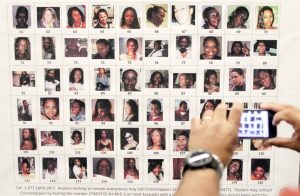 They’re not as rare as you might think. Females make up 20% of all murderers. But, and this is huge, most female killers don’t stop at one victim. To put it into perspective, even though females only make up 20% of all killers, they represent a larger percentage of serial murders than of any other type of homicide in the U.S.
They’re not as rare as you might think. Females make up 20% of all murderers. But, and this is huge, most female killers don’t stop at one victim. To put it into perspective, even though females only make up 20% of all killers, they represent a larger percentage of serial murders than of any other type of homicide in the U.S.
You deal with five main female serial killers in Pretty Evil New England. Did you come across more but couldn’t include them in your book?
While researching I found enough female serial killers to write about them for years.
Yikes! You did an amazing amount of research in putting Pretty Evil New England together. Give us some of the highlights.
Thanks! Maybe you can ease up on the pressure while I share some of my research trips
No, but go ahead anyway.
In the state archives I found old diaries spanning 50 years. These diaries were written by a close friend and neighbor of the New Hampshire victims and killer. The handwriting took me forever to decipher, but once I did the additions of diary entries added a cool touch to the overall storyline.
 One of my coolest discoveries was an entire floor in the old house where several victims lived and died, a floor untouched by time, perfectly preserved in 1881. I laid my fingers on the same ivory keys of the piano that the victims and killer did. I sat on their sofa, admired their belongings, and perused their stunning mahogany and glass bookcases filled with priceless first editions. Surrounded by history, Bob and I were overcome by emotion. We could only stare — wide-eyed — taking it all in. It was one of the most surreal experiences of my life. I was literally walking through the pages of my book.
One of my coolest discoveries was an entire floor in the old house where several victims lived and died, a floor untouched by time, perfectly preserved in 1881. I laid my fingers on the same ivory keys of the piano that the victims and killer did. I sat on their sofa, admired their belongings, and perused their stunning mahogany and glass bookcases filled with priceless first editions. Surrounded by history, Bob and I were overcome by emotion. We could only stare — wide-eyed — taking it all in. It was one of the most surreal experiences of my life. I was literally walking through the pages of my book.
Another research trip took me to a Potter’s field in Taunton, Massachusetts. It’s heartbreaking to view the graves of people who died, their bodies unclaimed by family, with nothing more than a number to mark their existence.
Then I drove to Cape Cod (6 hours round trip) and to Harvard University (4 hours round trip), which was also an amazing experience. One of the top physicians of late 1800s to early 1900s kept a scrapbook there, which is why I went. That trip also created a cool parallel between my life and my book. My mom went to Harvard, so it was the first time I got to experience a brief moment from her past. She died when I was a teenager. Like many folks who experience loss, I long for any brief glimpses of her life.
Touching. In all seriousness, Sue, that’s touching. You used some striking quotes about female serial killers that other authors over time produced. How about sharing some?
Thanks. I thought they were a cool feature. Here are the first three…
According to FBI behaviorists, the best way to survive a male serial killer’s attack is to let him get to know you on a personal level. By humanizing yourself, you’ll ruin his fantasy of you as a victim. This won’t work with a female serial killer. They already know you. — Federal Bureau of Investigation
It’s about the pleasure of the kill—the sense of power she gets—the buzz. Taking property is just a warm snack in the feast control—a little further satisfaction, a tingling in the killer’s tummy. — Peter Vronsky, author of Female Serial Killers
Although most female serial killers murder for money or other profit, some do it for the attention and sympathy they receive following the death of someone they cared for. — Psychology Today
Poison – The weapon of women. Is this an M.O. (modus operandi) unique to women killers… serial or otherwise? I don’t recall a case of a man using toxins in a murder.
Men use poison, too, but it’s not nearly as lethal as poison in a woman’s hand. One exception could be The Teacup Poisoner. In 1961, at age 14, an Englishman named Graham Young began testing different poisons on his family, eventually murdering his stepmother. He also poisoned his father, sister, and best friend. After confessing the following year, the court sentenced him to 9 years in a hospital for the criminally insane. At which time doctors released him as “cured,” even though he poisoned a fellow inmate and promised to murder one person for every year of incarceration. This led to two murders, two attempted murders, and 70 other poisonings over the next year. He received four life sentences for his crimes.
Two other quick examples: In 2008, David Steeves, a Long Island man, murdered his estranged wife with cyanide. In 2013, William Cain, a Kentucky man, plead guilty to adding “just a little rat poison” to his wife’s coffee.
Women prefer poison for various reasons.
- Easy to obtain.
- No muss, no fuss. A light sprinkle is all it takes.
- No blood to clean up afterward.
- They don’t need to hide the body.
- The patients languish while they care for them.
Death by poison is not an easy way to go. Victim suffering pleases the female serial killers. Unlike men, women don’t keep trophies. Murder is their ultimate reward. If you think men are vicious, then you’ve never pushed a woman to the point of wanting to kill you. LOL
I had a woman try to kill me.
I sense a story here.
She hatchet-threw a mill bastard metal file at my head. The handle-less point jammed into the wall two inches from my left ear. Then I whacked her with my police-issued flashlight. Hey – I’m amazed by the toxicology sophistication used back then to identify poison. Give us the Cliffs Notes version of how arsenic works on the human body and how the forensic scientists back then identified arsenic poisoning.
Wasn’t that fascinating? I don’t mean nearly getting a metal-working tool imbedded in your brain. The toxicology… it blew my mind, too. Many of the toxicology tests are still used today.
 Death by arsenic is a not a fun experience. In most cases, symptoms appear within the hour. The first sign is an acrid sensation in the throat, followed by nausea which grows more and more unbearable by the moment. Vomiting sets in and continues long after the stomach empties. The victim dry heaves until they’re throwing up fluid streaked with blood. The mouth parches, the tongue thickly coated as the throat constricts with an inextinguishable thirst. Anything he or she drinks only makes the vomiting worse. Uncontrollable diarrhea, often bloody, complete with racking abdominal pains. Some victims experience burning from mouth to anus. The eyes grow hollow. Swelling of lips, eyes, and under the chin can occur, and the skin is cold and clammy. Breathing labors, extremities ice cold, the heartbeat weak, and binding cramps in the muscles of the legs. Depending on the amount of arsenic administered, these symptoms last from a few hours to several days or weeks.
Death by arsenic is a not a fun experience. In most cases, symptoms appear within the hour. The first sign is an acrid sensation in the throat, followed by nausea which grows more and more unbearable by the moment. Vomiting sets in and continues long after the stomach empties. The victim dry heaves until they’re throwing up fluid streaked with blood. The mouth parches, the tongue thickly coated as the throat constricts with an inextinguishable thirst. Anything he or she drinks only makes the vomiting worse. Uncontrollable diarrhea, often bloody, complete with racking abdominal pains. Some victims experience burning from mouth to anus. The eyes grow hollow. Swelling of lips, eyes, and under the chin can occur, and the skin is cold and clammy. Breathing labors, extremities ice cold, the heartbeat weak, and binding cramps in the muscles of the legs. Depending on the amount of arsenic administered, these symptoms last from a few hours to several days or weeks.
I should add, not all of the serial killers in this book used arsenic. Some were more creative.
How chemists detected poison back then? No matter how many times you hit me with the cattle prod, I refuse to give away all my secrets. Read the book. 😉
I didn’t hit you with the cattle prod. I zapped you. There’s a difference. Okay, I don’t want to give any details away about what happened to the pretty evil killers in your book, but I have a curiosity. When it came to trial, convictions, and sentencing… do you think these killers were treated lighter because they were women?
Hmm, without ruining the ending, I can say a couple of the juries might’ve gone easy on them, but in those cases, factors beyond gender were also at play. The others, no. Two in particular suffered fates worse than death.
I’m going to put you on a hot-spot. Do you think women are smarter than men when it comes to serial killing?
Absolutely. Ouch! Easy with electricity jolts. Okay, okay, I’ll explain…
On average a male serial killer’s reign lasts about four years. Female serial killers? Eight to ten years. And some last thirty years without detection. Imagine how many weren’t caught? Statistically speaking, women are simply better at serial killing than men. 😊
By definition, what is a serial killer? Just a sec… you shouldn’t be smoking. Gotta turn this down.
Whoah… smoking… no… that’s better. Today’s FBI definition is “the unlawful killing of two or more victims by the same offender(s), in separate events.” It used to be three or more with “a cooling off period,” but they’ve updated the definition since then.
By population percentage, are serial killers on the rise? Are they increasing in proportional numbers? Or, have they always been part of societies?
They’ve always been part of society, and that includes female serial killers. I don’t know if I’d say the numbers are increasing, necessarily. It may appear that way because law enforcement has better tools to identify serial clusters now. Though the numbers do boggle the mind. In May 2019, I wrote a post entitled How Many Serial Murderers Stalk Your Streets, which offers eye-opening statistics for each state within the U.S. as well as an overall count for numerous other countries, including Canada.
Any idea many serial killers are active in the United States alone today?
Last time I checked the database (2019) we had 1,948 active serial killers in the United States. The good news is, after age 30, your chances of being murdered by a serial killer drastically reduces.
I’m well past 30. Okay. Let’s get off this gruesome topic and talk about me for a while. J… K… Let’s talk about Sue Coletta. What’s your background? How’d you get your writer chops? Where’re you at today? And what does tomorrow bring once Pretty Evil New England tops the charts?
My background is in law (paralegal). I also owned & operated two hair salons. During that time, I wrote about a dozen children’s books. Not for publication, just for friends’ kids to enjoy. It wasn’t till 2012 that we moved north, and I tried my hand at crime writing. How did I get my start? I chose the traditional publishing path, so querying, rejection, and finally scoring my first contract. I continue to write thrillers in my two series, Grafton County Series and Mayhem Series. I’m also working on Book 1 of a new true crime series, which is out on submission. This time around, rather than feature multiple female serial killers, I’ve focused on one ruthless woman whose crimes shocked even me.
Nasty. One curiosity. In Pretty Evil New England, you end with an interesting notation that death certificate procedure changed following the cases in the book. Can you elaborate on this?
Back in the day, attending physicians didn’t need to be present to issue a death certificate. In some cases, the doctor hadn’t examined his patient in weeks or months. Polite New England society didn’t browbeat the patient’s kin to dig for the truth. Instead, they relied on the family’s firsthand accounts to fill in the blanks.
The murderous acts of the five female serial killers depicted in Pretty Evil New England shook the foundation of medical and legal communities far and wide. These “ladies’” crimes led to death certification reform and a ban on arsenic in embalming fluid.
Last call. Where and when can DyingWords followers get a copy of Pretty Evil New England — True Stories of Violent Vixens and Murderous Matriarchs?
The “official” release is November 1, 2020, but readers can preorder at the following links and the books will be delivered by that date.
Amazon (all countries, Kindle & paperback)
Barnes & Noble (NOOK & paperback)
Books-A-Million (ebook & paperback)
IndieBound (paperback)
BookShop (paperback)
Globe Pequot
Rowman & Littlefield
Now, untie me! I’ll stick around for DyingWords readers as long as you keep that prod-thing to yourself.
——
Sue Coletta is no longer tied up and prodded for answers. She’s now available on the comment board. And… Sue has a free print copy of Pretty Evil waiting for one lucky person who writes “Gimme The Book” in the comment box. Thanks, Sue. You’re a sport!
Write “Gimme The Book” in the comments and win a FREE copy of Pretty Evil New England!
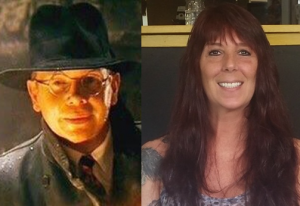 Sue Coletta (right) and Garry Rodgers (left) are crime writers from opposite sides of the North American continent. Sue is a member of Mystery Writers of America, Sisters in Crime, the Kill Zone, and International Thriller Writers, She’s also an award-winning crime writer. Sue Coletta writes two serial killer thriller series, Grafton County Series (Tirgearr Publishing) and Mayhem Series (Tirgearr Publishing), with a Mayhem Series crossover novella in Susan Stoker’s World (Aces Press) and another in Elle James’ World (Twisted Page Press). Sue also writes true crime for Globe Pequot, trade division of Rowman & Littlefield Group, Inc. PRETTY EVIL NEW ENGLAND hits bookstores Nov. 1, 2020. Here’s Sue’s Youtube trailer for Pretty Evil.
Sue Coletta (right) and Garry Rodgers (left) are crime writers from opposite sides of the North American continent. Sue is a member of Mystery Writers of America, Sisters in Crime, the Kill Zone, and International Thriller Writers, She’s also an award-winning crime writer. Sue Coletta writes two serial killer thriller series, Grafton County Series (Tirgearr Publishing) and Mayhem Series (Tirgearr Publishing), with a Mayhem Series crossover novella in Susan Stoker’s World (Aces Press) and another in Elle James’ World (Twisted Page Press). Sue also writes true crime for Globe Pequot, trade division of Rowman & Littlefield Group, Inc. PRETTY EVIL NEW ENGLAND hits bookstores Nov. 1, 2020. Here’s Sue’s Youtube trailer for Pretty Evil.






